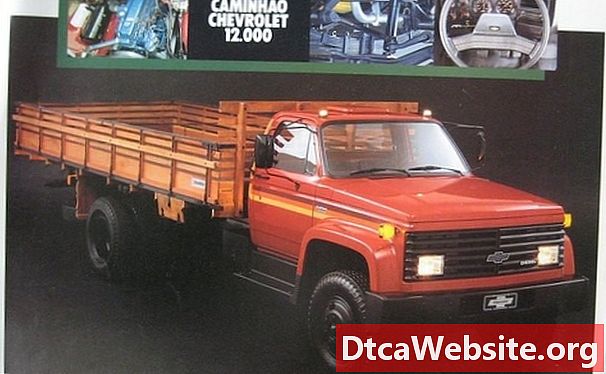
Contenu
- Turbo 350 Background
- Turbo 400 Background
- Gear Ratios
- Shared Components
- Heavy-Duty Popularity
- Turbo 400 Phase-Out
- Toe-to-Toe
The General Motors Turbo 350 and Turbo 400 automatic transmissions are perhaps the automakers most popular ever produced. Although neither remains in production today, they are still heavily used on the drag strip circuit as replacement transmissions for 1960s and 1970s vintage cars. The Turbo 350 was the standard passenger car transmission version. The Turbo 450 saw more rugged service in high-performance cars and large trucks.

Turbo 350 Background
The Turbo 350 three-speed automatic, its formal name the Hydramatic 350, debuted in 1969 as a joint Chevrolet/Buick project to replace the two-speed Super Turbine 300 Powerglide automatic. It spawned the similar 250, 250c, 350c and 375b GM transmissions.
Turbo 400 Background
The Turbo 400 three-speed automatic was launched in 1964 for Buicks and Cadillacs. Its formal name is the Super Turbine 400. For the 1965 model year, Oldsmobiles, Chevrolets and Pontiacs were equipped with the Turbo 400. Its odd Texas-shaped oil pan distinguishes it from the Turbo 350.
Gear Ratios
Gear ratios vary, but the Turbo 350 typically has a first gear ratio of 2.52 to 1.00; 1.52 to 1.00 for second; direct drive in third; and 2.07 to 1.00 in reverse. The Turbo 400 features 2.48 to 1.00 in first; 1.48 to 1.00 in second; direct drive in third; and 2.07 to 1.00 in reverse, according to 4wheeloffroad.com and jeeptech.com.
Shared Components
The Turbo 350 shares many of the same components, including the torque converter, as the Turbo 400 and the Buick Super Turbine Powerglide. A lockup torque converter was added in 1980, but pulled four years later due to its inconsistent acceleration and downshifting, according to novak-adapt.com.
Heavy-Duty Popularity
The rugged Turbo 400 was a popular choice for four-wheel-drive vehicles, the ¾ inch and 1-ton GM pickups, and even the Ferrari because its ability to handle high torque. It can handle horsepower up to 500 with a 4.56 axle gear ratio and up to a 13,000-lb. towing capacity. According to 4wheeloffroad.com, this version powered President Ronald Reagans 1984 Cadillac Fleetwood Brougham and even military Humvees in the 1990s.
Turbo 400 Phase-Out
Smaller engines in passenger cars following the 1973 and 1978 gasoline shortages prompted the development of the Hydramatic 700R4 and 200-4R in passenger cars and Chevy and GMC pickup trucks. The Turbo 400 formally died in 1986 when it was renamed the 3L80.
Toe-to-Toe
The Turbo 350 works exceptionally well with modestly powered cars, but the more durable Turbo 400 is better equipped for high-performance vehicles. The Turbo 350, however, was more versatile in the 1960s because it because it had no fixed center support and was capable of being used in the rear-engine Corvair and the experimental mid-engine Corvettes. But the 350 was never applied to those vehicles and was phased out in 1984.


